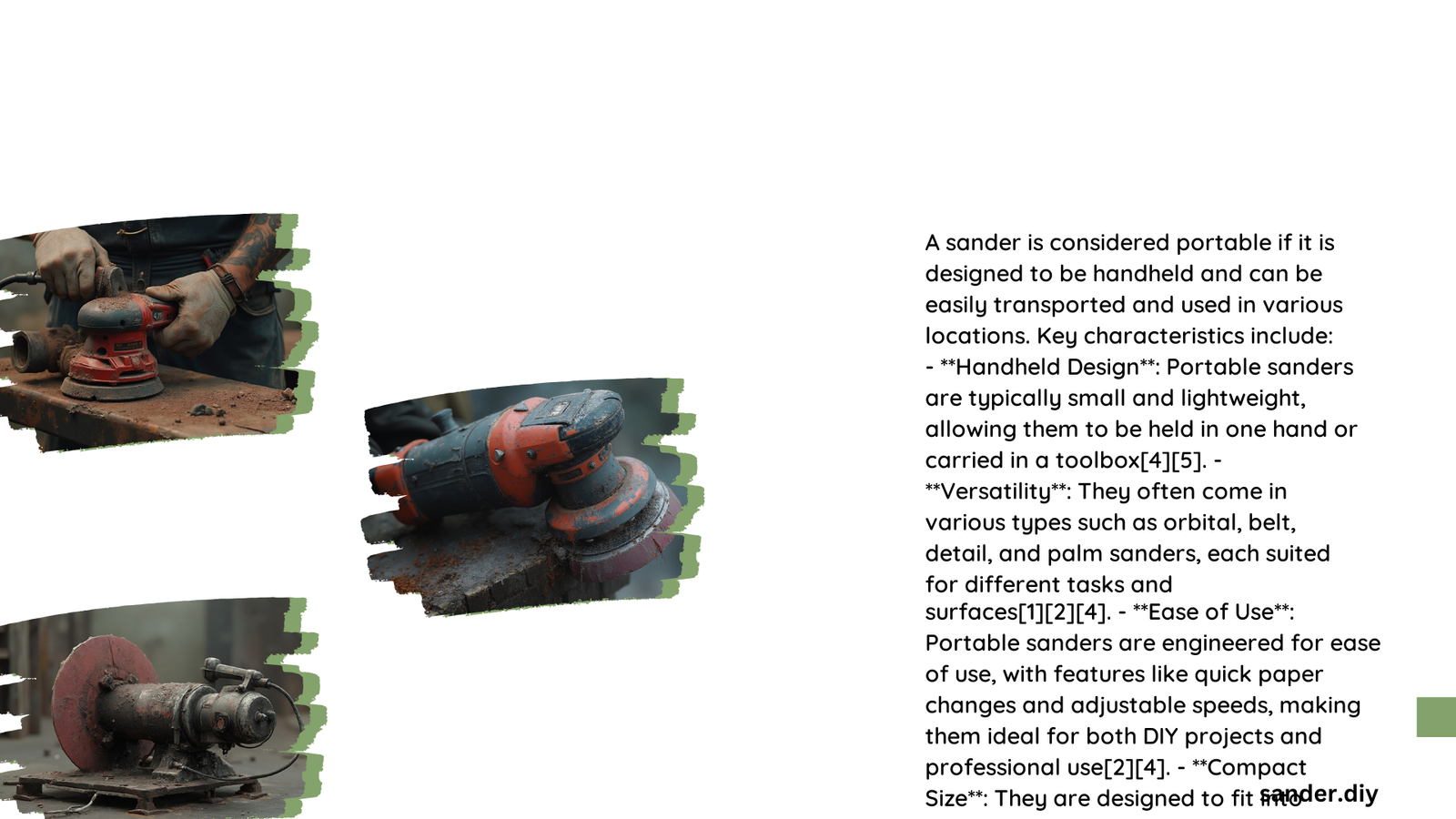A portable sander represents a versatile power tool designed for easy transportation and maneuverability across various work environments. These compact devices typically weigh under 10 pounds, feature ergonomic designs, and offer cordless or lightweight corded options that enable woodworkers, contractors, and DIY enthusiasts to sand surfaces efficiently without being tethered to a single workspace or restricted by bulky equipment.
What Defines a Portable Sander?
How Do Weight and Dimensions Impact Portability?
Portability in sanders is primarily determined by two critical factors: weight and physical dimensions. Professional tools like sanders must meet specific criteria to be considered truly portable:
| Sander Type | Weight Range | Typical Dimensions |
|---|---|---|
| Cordless Random Orbital | 2-4 lbs | 6-9 inches |
| Corded Belt Sanders | 5-8 lbs | 7-14 inches |
| Compact Orbital Sanders | 3-6 lbs | 5-8 inches |
Key Portability Characteristics
- Lightweight Construction: Typically under 10 pounds
- Compact Design: Easy to grip and maneuver
- Battery-Powered Options: Eliminate cord restrictions
- Ergonomic Handles: Reduce user fatigue
What Battery Technologies Enable Sander Portability?
Modern portable sanders leverage advanced battery technologies to enhance mobility:
- Lithium-Ion Batteries
- Provide consistent power output
- Faster charging times
- Longer runtime compared to older battery technologies
-
Minimal memory effect
-
Voltage Ranges
- 12V to 20V systems
- Support extended work sessions
- Quick battery swap capabilities
How Do Manufacturers Design Portable Sanders?
Manufacturers focus on several design elements to create truly portable sanders:
- Compact Motor Housings
- Lightweight Materials (aluminum, composite plastics)
- Integrated Dust Collection Systems
- Vibration Reduction Technologies
What Performance Metrics Matter for Portable Sanders?
Performance isn’t sacrificed for portability. Key metrics include:
- Orbits Per Minute (OPM): 8,000 – 12,000
- Sanding Pad Size: 3-6 inches
- Power Output: 2-6 amps
- Variable Speed Controls
What Are Cost Considerations for Portable Sanders?
Price ranges vary based on features and brand:
- Entry-Level: $50 – $100
- Mid-Range: $100 – $250
- Professional Grade: $250 – $500
Practical Applications and User Considerations

Portable sanders excel in scenarios requiring:
– On-site woodworking
– Furniture restoration
– Automotive body work
– Home improvement projects
– Tight space sanding
Maintenance Tips for Portable Sanders
- Regular dust collection system cleaning
- Periodic battery maintenance
- Proper storage in protective cases
- Routine lubrication of moving parts
- Timely replacement of sanding pads
Conclusion
A sander is considered a portable sander when it combines lightweight design, compact dimensions, efficient battery technology, and versatile performance capabilities. Professionals and hobbyists alike benefit from these innovative tools that provide maximum flexibility without compromising on quality.
